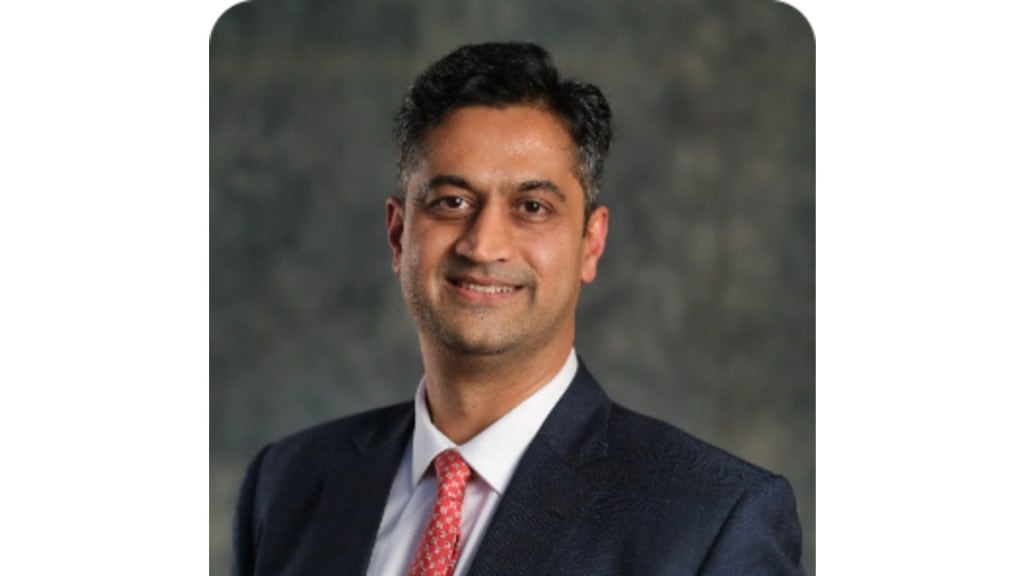Ganesh Mohan, MD, Bajaj AMC believes investor inteerst in index and exchange-traded funds will only increase, as financial literacy improves. He tells Nesil Staney that ideally, investors should start early with a diversified equity fund or a hybrid fund, stay consistent and keep increasing systematic investments (SIP). Excerpts:
1. Do you think passive products will outgrow like in the US?
Passive investing is gaining traction in India, just like it did in the US in the early 2000s, but the context is different. In the US, most investors are institutions who prefer low-cost, index-based investing. In India, however, the mutual fund industry is still led by retail investors, many of whom are first-time or recently entered participants in the financial markets. We are seeing increasing interest in index funds, exchange-traded funds (ETFs), and fund-of-funds. This trend will accelerate as financial literacy improves and more investors seek simple, rule-based products.
However, it’s important to note that active funds will continue to play a dominant role in India for the foreseeable future. In short, passive funds are not a replacement for active funds, but a complement. Indian investors may be benefited most from a blend of both, tailored to their goals and risk appetite.
2. How are current valuations in listed and unlisted equity markets?
Valuations in the listed space are quite mixed. The correction between September 2024 and March 2025 has created selective pockets of comfort. It appears to be a heterogeneous market where neither everything is expensive, nor everything is attractive. In the early stages of an upcycle, it’s not unusual for certain stocks to look expensive at first glance. But as earnings growth begins to catch up, many of these valuations start to look far more reasonable. In this environment, we’re seeing quality businesses with strong growth visibility available at fair prices.
3. What is the stock selection criteria of your fund managers?
Our stock selection process is rooted in a quality-first approach. We start by filtering out companies with governance concerns, which helps us avoid structural risks upfront. Once we have a clean universe, we apply what we call the Quality, Growth, and Value framework. We evaluate the strength of the business model, including its ability to sustain profitability, return ratios, and capital efficiency across various economic cycles.
From there, we assess the growth, looking out for whether the company can capture market share, scale efficiently, or benefit from broader industry tailwinds. It is only after this that we consider valuations. At this stage, we base our decision on the overall risk-reward profile—either by accessing quality growth at a reasonable price or by identifying underappreciated quality businesses that still offer value. This disciplined yet flexible approach enables us to identify differentiated ideas that the market may have misjudged or not yet priced in.
4. What factors should a new investor consider when selecting a mutual fund SIP, and are small ticket SIPs a good starting point for them?
Starting small is perfectly okay. SIPs of ₹500 or ₹1000 per month are a great way to develop investing discipline without straining your monthly budget. However, before beginning a SIP, new investors should keep three key factors in mind. 1) Investment Goal 2) Investment Horizon 3) Risk Appetite. Starting with a diversified equity fund or a hybrid fund via SIP is usually a suitable entry point. Over time, one can diversify into other categories. The key factor is to start early, stay consistent, and keep increasing your SIP amount as your income grows.
5. How do you evaluate corporate governance?
We are very conscious about the companies we include in our portfolio. Our approach begins by excluding businesses with weak governance—whether stemming from poor capital allocation, lack of transparency, or inconsistencies in management practices. We conduct detailed, data-driven checks, including analysis of auditor reports, banking relationships, and other regulatory filings, which helps us identify potential red flags early and avoid companies that may pose structural risks. Our objective is not just to prevent downside but to ensure we are backing credible management teams with clean track records. After narrowing down the universe, we identify long-term structural opportunities within it.
6. Which is your top-performing fund(s) currently, and what differentiates them in the category?
Our flagship equity fund, i.e., Bajaj Finserv Flexi Cap Fund, is currently placed in the top quartile over 6-month and 1-year periods. This performance stems from our distinct and disciplined strategy of investing in businesses that are a part of current and future megatrends in India. The Bajaj Finserv Large and Mid-Cap Fund portfolio is built using moat investing, targeting companies with sustainable competitive advantages. The Bajaj Finserv Large Cap Fund invests in the champions of corporate India, leaders with scale, governance, and execution strength. The Bajaj Finserv Multi Cap Fund follows a contrarian style, spotting overlooked opportunities before the market catches up. The recently launched Bajaj Finserv Small Cap Fund filters investments based on quality, growth and value.
In the hybrid funds, the Bajaj Finserv Balanced Advantage Fund dynamically adjusts equity-debt exposure using fundamental and sentiment market indicators. The Bajaj Finserv Multi Asset Allocation Fund blends dividend-yielding and growth stocks for balanced equity exposure alongside the allocation to Gold and Silver. Across all debt funds, quality of instruments remains uncompromised; capital safety is bedrock of our approach.
7. Are there NFOs planned in the next 6 months?
While we can’t name the funds just yet, we’re actively exploring launches in areas like a thematic equity fund, a few well-structured passive products and some curated fund-of-funds in the next few months. The idea is simple: every fund we introduce must solve a purpose, whether it’s long-term wealth creation, diversification or ease of investing. For us, launching a New Fund Offer (NFO) isn’t just about creating another scheme, it’s about offering investment solutions that genuinely help investors achieve their goals. We’re always catering to what investors potentially need, be it access to themes, simplified asset allocation or cost-efficient options.
